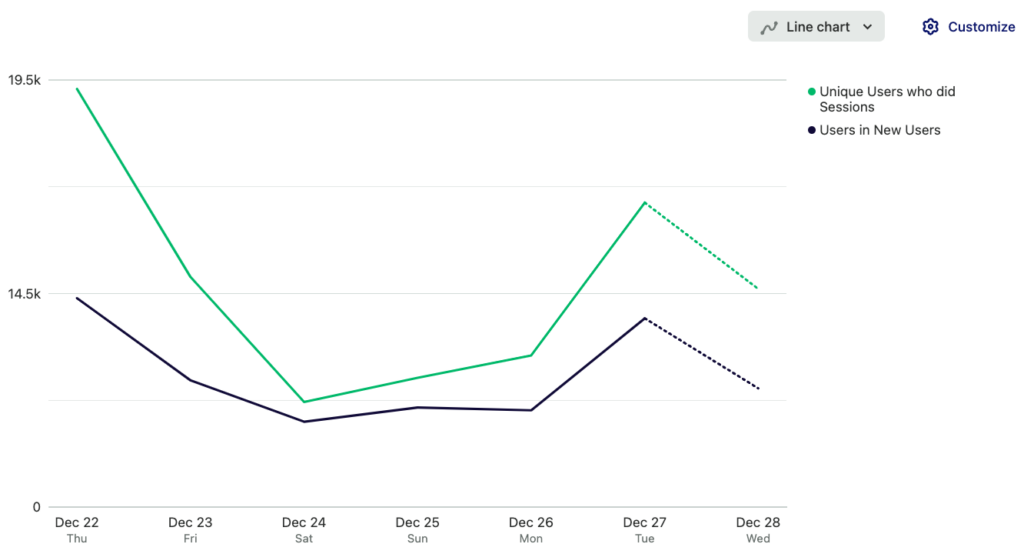Because of Heap’s data model, we don’t currently have an accurate way to do analysis on new versus. existing users within Heap. However, you can find some examples of analysis that you can do below to understand how many new users you have within a given time range.
In Heap, new and existing users are defined as follows:
- New: A user whose first event / initial touch (such as their first pageview) was within that time frame (day, week, month, etc). We provide a New Users segment you can use in analysis.
- Existing: A user who has more than one session during that time frame. There’s no default segment for this, though you can chart a Count Unique of Sessions as an equivalent.
Via the New Users Segment
We have a default segment called New Users, which you can chart to compare new and existing user activity during a specific point of time. To use this segment, complete the following steps:
1. Navigate to Analyze > Usage over time
2. Select More > Multiple metrics
3. For metric #1, select User behavior > Users who are in segment > New Users

4. For metric #2, select Unique users > Session – We don’t have a default segment for existing users, hence using this measure

5. Click View results to generate a line chart with your new and existing users.

This chart allows you to see the total number of unique users who had a visit and the number of those users who were “new”. You can subtract your new users from your unique users to get the total count of returning users.
If you chart your new users immediately after installing Heap, your New Users count will be inflated as Heap is seeing these users for the first time.
Segment Limitations
It is currently not possible to use the New Users segment anywhere else in analysis in Heap, such as in a filter or group by.
You might be tempted to try to conduct this via a group by Count of Sessions at any time. However, behavioral group bys are for all time, and cannot be modified to represent a particular point in time.
Via Heap Connect
If you’re using Heap Connect, you can use the following SQL query to conduct true new versus existing user analysis:
-- CTE to determine if a given session_id is a new or returning visit
WITH new_vs_returning AS (
SELECT user_id,
session_id,
CASE WHEN row_number() over (PARTITION BY user_id ORDER BY time) = 1 THEN true ELSE false END AS new_visit
from heap_production.sessions
)
-- your query, including the new_visit column from the CTE
SELECT time::date, p.user_id, p.session_id, path, nr.new_visit
FROM heap_production.pageviews p
-- join the CTE as a segment
INNER JOIN new_vs_returning nr USING (user_id, session_id)
ORDER BY "time"
LIMIT 50